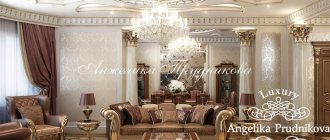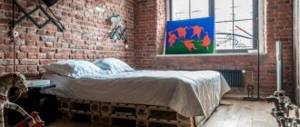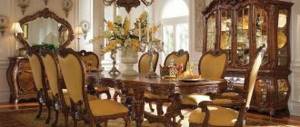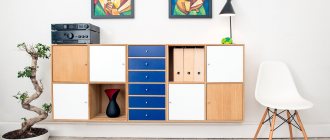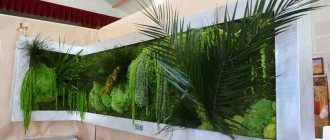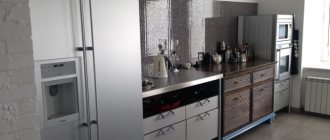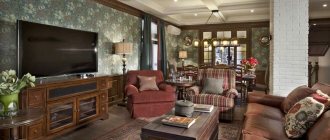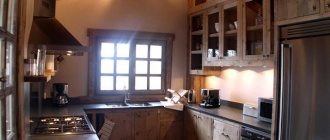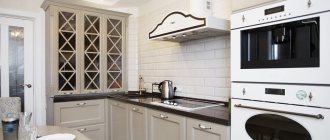- Basics of Spanish style
- Preparing the premises
- Characteristic accessories
- Spanish style in practice
If you have been to Spain at least once, you have probably noticed that the Spaniards know a lot about decorating their homes. Even the simplest and most inexpensive Spanish apartments impress with their brightness and originality. The spirit of passion and home comfort soars in them. However, no matter where you live, you can use the Spanish style in the interior of your home.
Spanish style in the interior: colors
The color scheme of Spanish interiors is quite diverse. It contains natural shades such as green, blue and brown. It also has warmth and positivity from yellow, red and terracotta colors. Pure white is also available. It is the neutral white shade that often serves as the backdrop for incredibly vibrant Spanish ornaments and rich decor.
Expert recommendations
First, let’s listen to what our experts from the Archdialogue agency say about the Spanish style:
Victoria Pashinskaya, head of the interior design studio:
“Signs of the Spanish style are exposed wooden beams, arched windows, and wrought iron furniture. The entire interior carries a feeling of brightness, sun, holiday and puts you in a romantic mood. A characteristic feature of the Spanish style is wall painting. It gives the interior dynamics and volume. On the floor it is better to use natural wood, as well as ceramic tiles in bright, contrasting shades. Windows in Spanish interiors are often closed with wooden shutters or framed with wrought iron elements. To match them are forged lamps, wall sconces and table lamps with stained glass lampshades. Handicraft elements play an important part in a Spanish-style interior: painting furniture, remaking old things with your own hands - all this gives the interior comfort and authenticity. The entire Spanish-style interior is rich in details, but not overloaded with them. It’s important to maintain a balance of color, decor and finishing.”
S Vetlana Yurkova, private interior designer:
“Spain is a country of passion. And the red color perfectly reflects this feeling: it is difficult to imagine a Spanish-style interior without bright accents. This style is somewhat reminiscent of the Mediterranean due to its romance, a lot of air and light. In a Spanish interior, special attention should be paid to accessories. There are many items made of ceramics, earthenware, clay, and copper with thematic ornaments. When decorating the interior in Spanish style, do not forget about textiles. Bright pillows, upholstery, carpets, bed linen, curtains, canopies - everything is decorated with Moorish patterns, ornaments and paintings.”
Undoubtedly, Spanish interior design impresses with its brightness and originality. If you want to bring the spirit of Spanish passion and home comfort into your own interior, adhere to certain principles.
Entrance hall in Spanish style
The Spanish style gained popularity at the beginning of the last century. To decorate the hallway, antique statues, carved elements, gilded details and vases with living plants are used. Hangers and furniture sets made of dark wood look great surrounded by light walls, and a homespun rug completes the rustic composition. Forged elements decorate doors and lighting fixtures.
If the hallway area allows, then massive furniture is installed. In the hallway you can place a banquette, an ottoman with carved legs and a table, the tabletop of which is decorated with national motifs. A mirror framed with metal motifs and flooring made of natural materials complete the composition of the hallway.
Finish: plaster and beams
The walls in a Spanish interior are usually plain, covered with textured plaster or paint. The ceiling surface is often highlighted with massive wooden beams or decorative structures. On the floor there are ceramic tiles or natural wood. In general, natural materials predominate in the decoration of this style.
Furniture: dark and massive
Furniture in a Spanish interior is predominantly classic, massive, made of dark leather or wood, and it can be decorated with carvings or artistic forging. A fireplace gives Spanish living rooms a special charm and cozy atmosphere. We can say that Spanish-style interior design is built on contrasts of textures and colors.
Spanish style bedroom
The bedroom uses calm, warm tones of beige, sand, light coffee and muted green, olive shades. Gold inserts complement the interior. The central place in the room is given to the sleeping area, which is made from dark-colored trees. The bed should be decorated with forged parts and an airy canopy.
A combination of several styles is allowed in the bedroom. Simplicity and grace are intertwined in it. The design of the room is emphasized by individual elements - forged cornices, paintings, wooden, stone and iron elements.
Comfort and a feeling of warmth are created by handmade items - knitted napkins, lace motifs, embroidered paintings, patterned figures, etc. The color of the style is emphasized by a small colorful carpet.
spanish style bedroom
Accents: Wrought Iron and Ceramic
Wrought iron and ceramics add authenticity to Spanish interiors. Forged decor can be in lighting elements - wall sconces, chandeliers, candlesticks, as well as in decorative parts of furniture, fittings, and accessories. Ceramic tiles with bright natural patterns are usually used in the bathroom and kitchen; traditional pottery is used on the table and as decoration.
Features and characteristics of the Spanish style
Spanish style is classified into two types:
- Classical. House decorations were decorated in this manner until approximately the end of the second half of the 19th century.
- Modern. Over the last hundred years, the style has undergone a slight “polishing” by time to adapt to modern realities. The final version turned out great.
Traditional Spanish style has similar features to the usual classics: expensive materials, darker shades, abundance of decor, luxury in every detail. The modern version does not use certain elements that may cause inconvenience. For example, arched openings without doors. Also, various benefits of technical progress have been added to the modern adaptation, without which no interior can do. In a Spanish setting, combinations of light background tones and bright accent colors are used.
Be sure to have massive furniture made of dark wood and forged elements. Decorative details are grouped in separate areas of the room. If the “rustic” version of the Spanish style is used, then handmade textiles (rugs, pillowcases) are a must. A row of wooden beams is traditionally left on the ceiling, alternating with plastered areas. If there are no such structures in the apartment, then they can be added as decoration to make it more similar to Castilian houses.
Designers recommend decorating all rooms in Spanish style. This advice applies to small cottages and one-room apartments. But in spacious country houses with many rooms, you can experiment with combined ethnic design, where Spanish will become only an integral part of a complex, stylistic picture.
Each room can symbolize a different country. The Japanese style will reign in the bathroom, the bedroom will be decorated with notes of Italy, and the Spanish direction will transform the living room.
